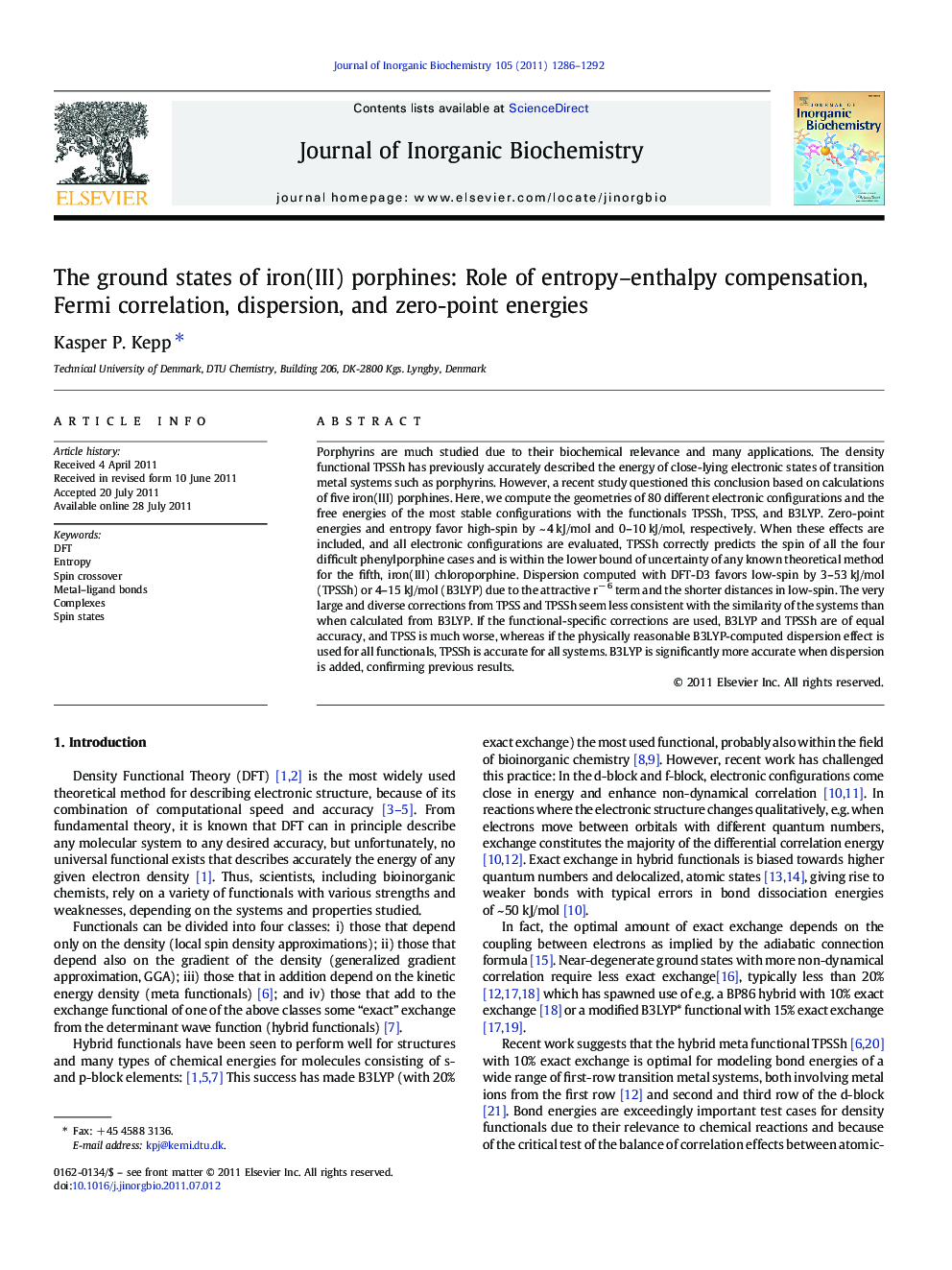| کد مقاله | کد نشریه | سال انتشار | مقاله انگلیسی | نسخه تمام متن |
|---|---|---|---|---|
| 1316093 | 976424 | 2011 | 7 صفحه PDF | دانلود رایگان |

Porphyrins are much studied due to their biochemical relevance and many applications. The density functional TPSSh has previously accurately described the energy of close-lying electronic states of transition metal systems such as porphyrins. However, a recent study questioned this conclusion based on calculations of five iron(III) porphines. Here, we compute the geometries of 80 different electronic configurations and the free energies of the most stable configurations with the functionals TPSSh, TPSS, and B3LYP. Zero-point energies and entropy favor high-spin by ~ 4 kJ/mol and 0–10 kJ/mol, respectively. When these effects are included, and all electronic configurations are evaluated, TPSSh correctly predicts the spin of all the four difficult phenylporphine cases and is within the lower bound of uncertainty of any known theoretical method for the fifth, iron(III) chloroporphine. Dispersion computed with DFT-D3 favors low-spin by 3–53 kJ/mol (TPSSh) or 4–15 kJ/mol (B3LYP) due to the attractive r− 6 term and the shorter distances in low-spin. The very large and diverse corrections from TPSS and TPSSh seem less consistent with the similarity of the systems than when calculated from B3LYP. If the functional-specific corrections are used, B3LYP and TPSSh are of equal accuracy, and TPSS is much worse, whereas if the physically reasonable B3LYP-computed dispersion effect is used for all functionals, TPSSh is accurate for all systems. B3LYP is significantly more accurate when dispersion is added, confirming previous results.
The ground states of iron(III) porphines with close-lying electronic states can be predicted accurately with the functional TPSSh when thermodynamic effects are considered. The study also emphasizes the importance of entropy, dispersion, and zero-point energy in stabilizing high-spin states.Figure optionsDownload as PowerPoint slide
Journal: Journal of Inorganic Biochemistry - Volume 105, Issue 10, October 2011, Pages 1286–1292